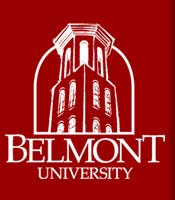 Indianapolis was a quiet day for us as a group. The time changes and late nights in Chicago brought on some heavy exhaustion, so we opted for a lax day in Indianapolis. Most of the group slept in a little later than usual, and had plenty of time to get ready before our tour of the Indianapolis Motor Speedway.
Indianapolis was a quiet day for us as a group. The time changes and late nights in Chicago brought on some heavy exhaustion, so we opted for a lax day in Indianapolis. Most of the group slept in a little later than usual, and had plenty of time to get ready before our tour of the Indianapolis Motor Speedway.
After the tour we grabbed a bite to eat and headed to Butler University for showers, then out to the Broad Ripple area to do some laundry and have dinner before heading back to the bus.
I wish we could've had more time in Indy, more of a picture of the city culture, but in a way, we really did. Indianapolis is a larger city in the scope of Midwestern America, but it's still a city in the Midwest on a Sunday. There's a huge tradition to Sundays, especially in the Midwest. The morning church service, the big family dinner, the family nap in front of the chosen sports event, the evening chores and miscellaneous errands needed to be done to prepare for the week. It's how I spent my Midwestern childhood, and how most people I know spent their's.
That's not to say that people in California don't watch football, and goodness knows that people in the South go to church, but there's a privacy to Midwestern Sundays. You don't often see people out and about in the afternoon, because they're all at home, with their families. The institution of family plays a huge role in American culture, but it's especially true when combined with other institutions like media, the economy and religion.
Of course, all of those institutions combined could be called The Indy 500. This became apparent when we toured the racetrack and discovered just how much of a "everyman" sport Nascar racing is. Even as we approached the Motorway, we didn't pass bars and tourist traps and pirates dressed as prostitutes like we did in Las Vegas. Instead we found family homes and hardware stores. When we toured the track, our guide pointed out the RV parks where drivers and spectators alike keep their mobile homes, so they can spend time with their families. He showed us the main backlot where drivers struggle to get through the crowds of spectators and to the racetrack because there is no physical barrier keeping the crowds back from their path.
He told us about his own stories, growing up at the track, and the times he's spent with his wife at different races. He even talked about the families who have switched brands of coffee because their favorite driver is sponsored by that brand. There's a huge sense of family to the whole sport. Part of that is constructed as a marketing strategy, but part of that is just because the race (for reasons unknown to me) appeals to a wide range of people, and families in particular. Maybe it appeals more to men, and the "family appeal" speaks more to the patriarchal family structure that is much more traditionally practiced in the Midwest.
But there is something sweet about the culture to Indianapolis. We took part by taking a "Chill Day" by catching up on chores, sleep, and our group relationships. By week three, we've become a family of our own. We even took in some Nascar.
